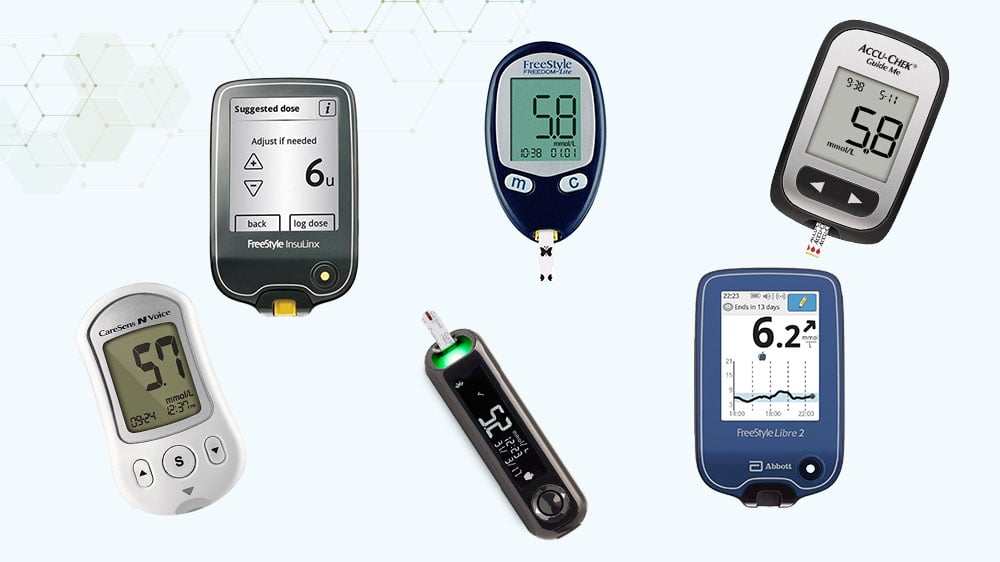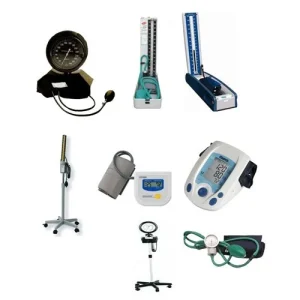Blood Glucose Meters: What Are They For? How They Work, Applications, and Safe Usage Tips

Blood glucose meters are essential tools for individuals who need to monitor their blood sugar levels, particularly those living with diabetes. By regularly measuring blood glucose, these devices help individuals manage their condition and prevent complications. In this article, we will explore what blood glucose meters are used for, how they work, their applications, and safety tips for their use.
1. What Are Blood Glucose Meters For? (Introduction, Common Types, and Benefits)
A blood glucose meter is a device used to measure the concentration of glucose (sugar) in the blood. This is essential for individuals with diabetes, as it helps them track their blood sugar levels and make informed decisions about their diet, medication, and lifestyle.
Common Types of Blood Glucose Meters:
- Traditional Blood Glucose Meters: These meters require a small blood sample, typically obtained from a finger prick, and display the blood sugar level on a digital screen.
- Continuous Glucose Monitoring (CGM) Systems: CGMs provide real-time blood glucose readings throughout the day and night, helping individuals with diabetes manage their condition more effectively.
- Smart Blood Glucose Meters: These devices sync with mobile apps or other devices to track and store data, allowing users to monitor their glucose levels over time and share results with healthcare providers.
Benefits of Blood Glucose Meters:
- Effective Diabetes Management: Regular monitoring of blood glucose helps individuals with diabetes maintain optimal blood sugar levels, preventing both hyperglycemia (high blood sugar) and hypoglycemia (low blood sugar).
- Prevention of Complications: By keeping blood glucose levels within the recommended range, individuals can prevent complications related to diabetes, such as nerve damage, kidney disease, and heart problems.
- Convenience: With portable blood glucose meters, individuals can check their blood sugar levels at home, work, or on the go, ensuring they stay in control of their health.
2. How Do Blood Glucose Meters Work? (Principle of Operation and Key Components)
Blood glucose meters work by analyzing a small blood sample to measure the concentration of glucose in the blood. The device then displays the blood glucose level in a unit of measurement, typically milligrams per deciliter (mg/dL) or millimoles per liter (mmol/L).
Key Components:
- Test Strips: These small disposable strips are inserted into the meter to collect the blood sample. The strip contains a chemical that reacts with the glucose in the blood to produce an electrical signal.
- Lancing Device: A small needle used to prick the skin, typically on the fingertip, to draw a small blood sample.
- Meter Display: The blood glucose meter displays the results on a digital screen, providing the user with their current blood sugar level.
- Battery/Power Source: Most blood glucose meters operate on batteries or rechargeable power sources, making them portable and easy to use on the go.
Process:
- Blood Sample Collection: The user uses the lancing device to prick their finger and obtain a small blood sample.
- Test Strip Insertion: The blood sample is placed on the test strip, which is then inserted into the meter.
- Glucose Measurement: The chemical on the test strip reacts with the blood, and the meter uses this reaction to calculate the blood glucose level.
- Results Display: After a few seconds, the meter displays the blood glucose reading, allowing the user to take the necessary actions.
3. Where Are Blood Glucose Meters Used? (Practical Applications)
Blood glucose meters are primarily used by individuals with diabetes or those at risk of developing the condition. They help users manage their blood sugar levels and adjust their lifestyle accordingly.
Common Applications:
- Diabetes Management: Blood glucose meters are indispensable for individuals with type 1 or type 2 diabetes, as they allow users to track their glucose levels regularly and make informed decisions about insulin administration, diet, and exercise.
- Pre-diabetes Monitoring: People with pre-diabetes or those at risk of developing diabetes may also use blood glucose meters to monitor their blood sugar levels and take preventive measures to avoid full-blown diabetes.
- Monitoring During Pregnancy: Pregnant women diagnosed with gestational diabetes use blood glucose meters to keep track of their blood sugar levels and ensure the health of both the mother and baby.
- Hospital and Clinical Settings: Healthcare professionals often use blood glucose meters to monitor patients’ blood glucose levels during hospital stays or routine check-ups.
Benefits for Individuals with Diabetes:
- Personalized Care: Regular monitoring allows individuals to adjust their insulin dosages, meal plans, and exercise routines based on their blood sugar levels.
- Prevention of Extreme Blood Sugar Fluctuations: By consistently tracking their glucose levels, users can prevent both high and low blood sugar episodes that can be harmful to their health.
4. How to Use Blood Glucose Meters Safely (Safety Tips and Important Considerations)
To ensure accurate readings and proper management of blood glucose levels, it’s essential to use the blood glucose meter correctly. Here are some safety tips for using the device effectively:
Tips for Safe and Accurate Usage:
- Follow Manufacturer Instructions: Always read and follow the user manual for your blood glucose meter. Each meter may have specific instructions for calibration, testing, and maintenance.
- Ensure Proper Test Strip Usage: Use the test strips recommended by the manufacturer for your specific device. Never reuse test strips, as this can lead to inaccurate readings.
- Wash Hands Before Testing: Clean your hands before testing to avoid contamination and ensure accurate results. If your hands are not clean, residue from food or other substances can affect the blood sample.
- Use the Correct Lancing Device Setting: Adjust the lancing device to an appropriate depth to avoid discomfort and ensure a sufficient blood sample.
- Store the Meter Properly: Keep your blood glucose meter in a dry, cool place when not in use. Extreme temperatures can damage the device and affect its accuracy.
- Calibrate the Meter Regularly: Some blood glucose meters require calibration to ensure accurate readings. Follow the manufacturer’s guidelines for calibration, if necessary.
- Dispose of Test Strips Properly: Always dispose of used test strips and lancets in a safe manner to avoid injury or contamination.
- Monitor Your Blood Sugar Regularly: Regular testing is essential for effective diabetes management. Work with your healthcare provider to determine how often you should monitor your blood glucose.
Conclusion
Blood glucose meters are invaluable tools for managing diabetes and maintaining optimal health. By providing accurate and timely measurements of blood sugar levels, these devices enable individuals to make informed decisions about their diet, exercise, and medication. Understanding how blood glucose meters work, their practical applications, and following safety tips for their use will ensure that you get the most accurate results and maintain good blood sugar control. Regular monitoring is essential for preventing complications and living a healthy life with diabetes.






